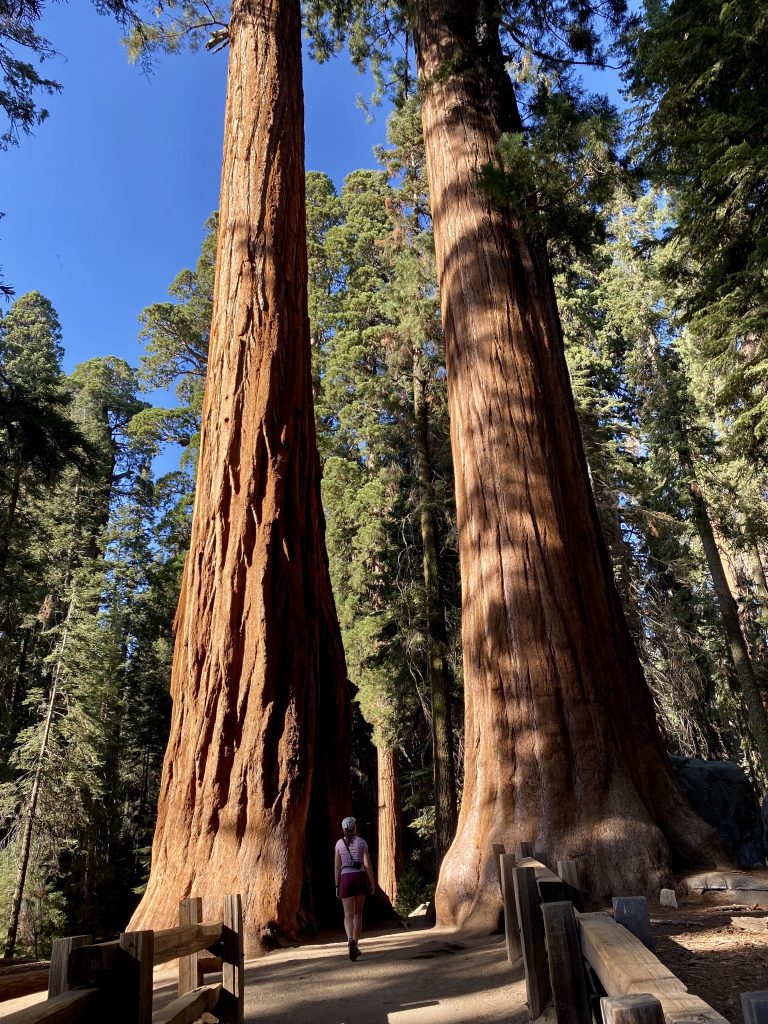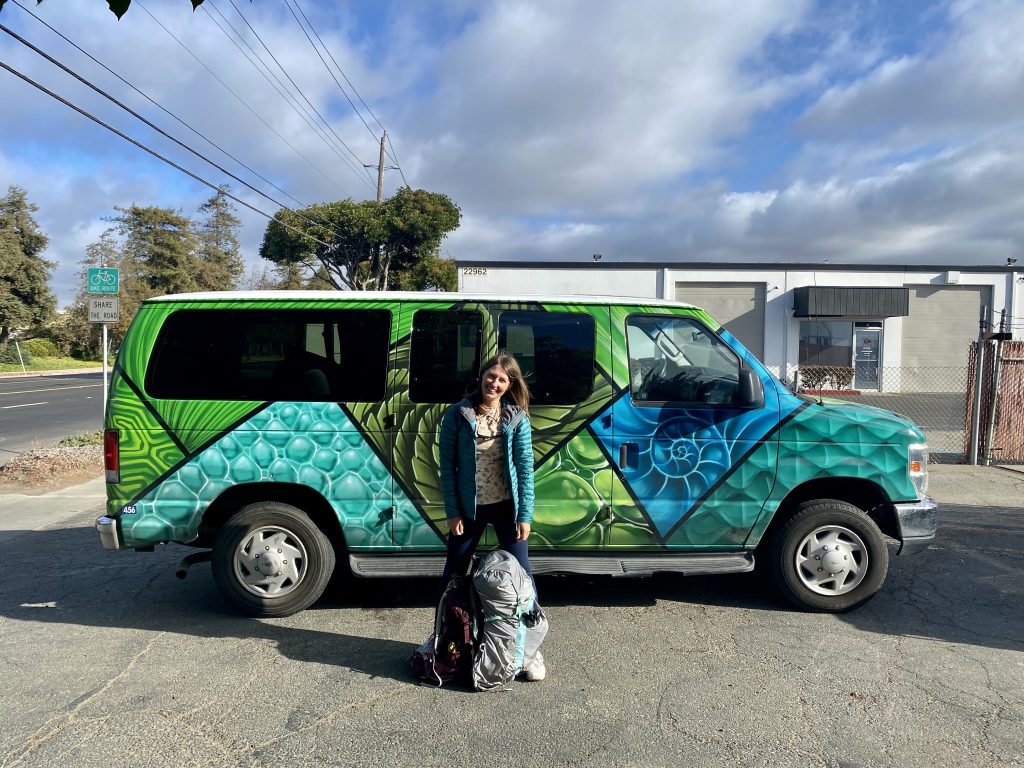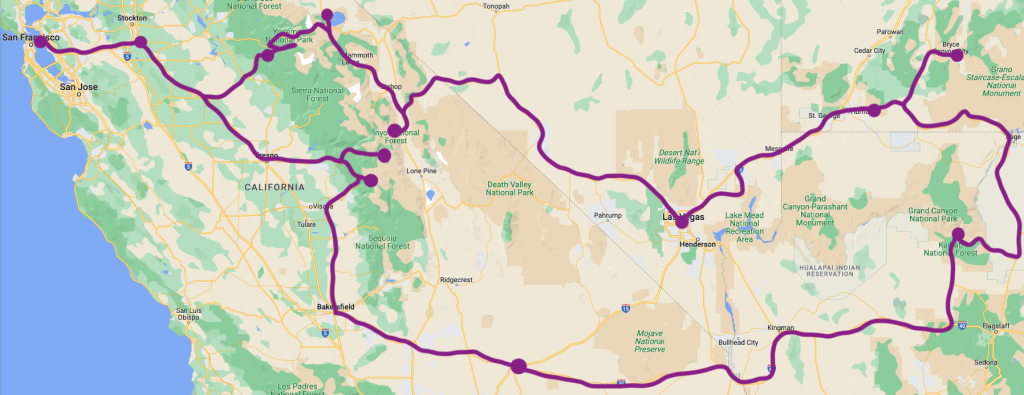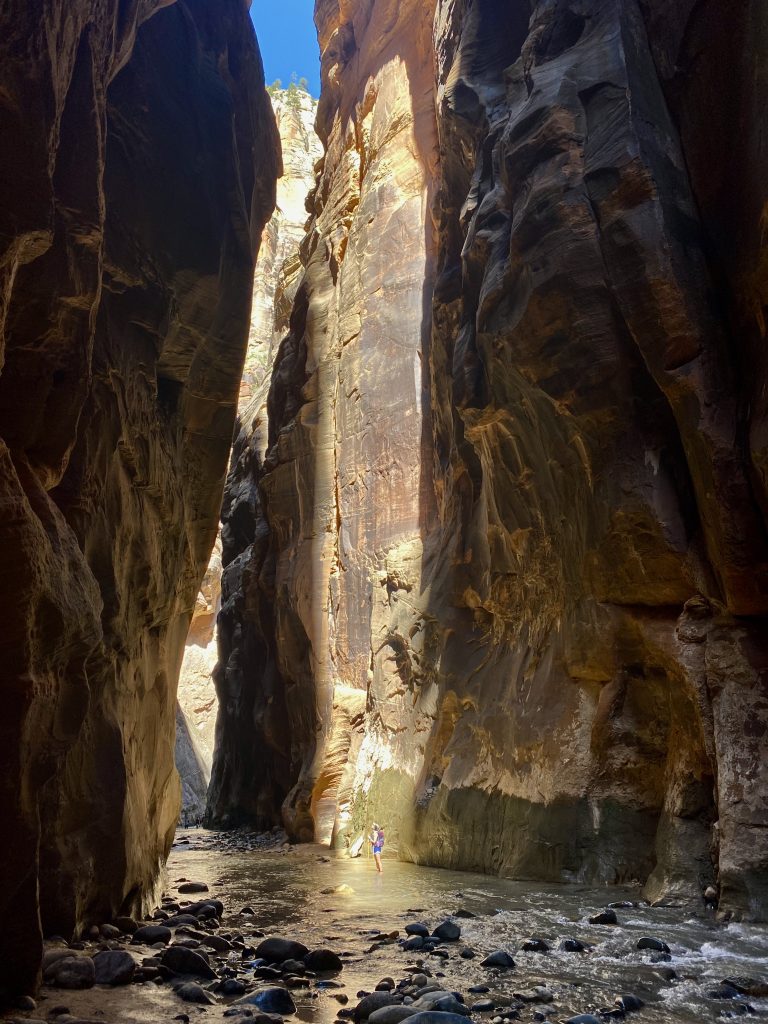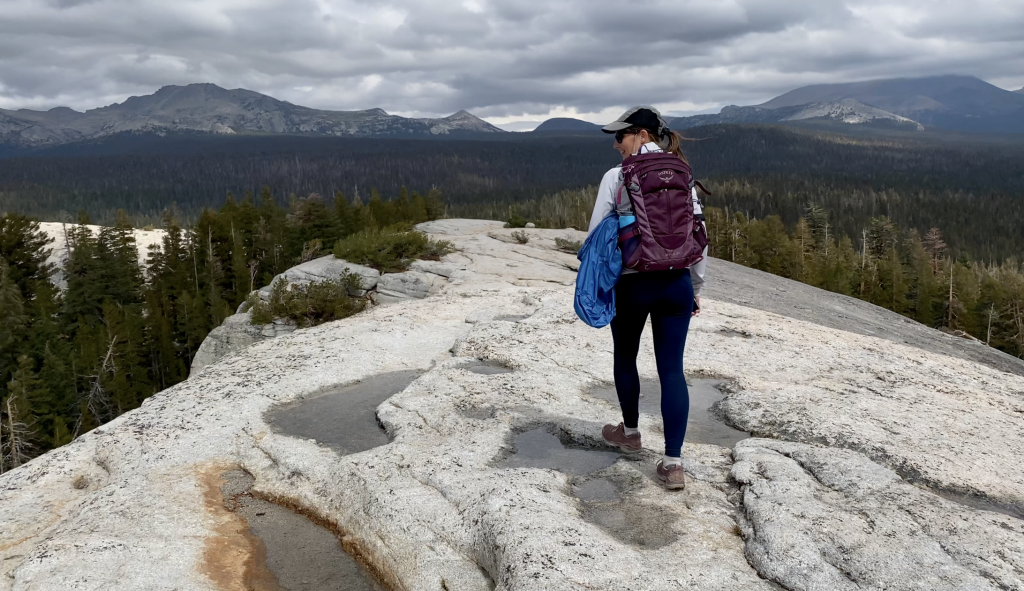The ultimate road trip guide for hikers - 3 weeks on the USA West Coast

Why the USA and Why the West Coast
This was the first visit to the USA for both me and Edo. Already a while ago we had this idea to see the famous America on a road trip. So many places to see! With 60 National Parks, we knew that we will be surprised. We were also looking forward to traveling in an English-speaking country – so eeeeeasy to communicate with the locals 😊
We chose the West Coast because the National Parks on that side looked really unique with landscapes different from what we’re used to in Europe. Besides, we had three weeks and wanted to see as much as possible. California alone is the most National Park-dense state with 9 National Parks so it was a great place to start.
How we decided to live in a camper van
This is not the first camper van trip we took as we traveled through New Zealand with a camper van a few years ago. This time we did not have a particular wish to travel with a camper van, but the costs of rental cars were so crazy, that soon into the research we made a choice to only look for a camper van.
Taking into account potential accommodation costs, renting a camper van just seemed like a cheaper deal compared to renting a car. Besides, this way of traveling adds to the overall experience as we could stay in nature while still sleeping under a roof.
Our trip in a nutshell
Typically we’ve spent 2 – 3 days in a national park so that we could explore it (hike in it) for at least one full day. In most of the places, we managed to do two (or even three!) hikes. For more information about the hikes we did, and our impression of each national park, check the “Hikes we did” section.
The National Parks / Forests we visited in 3 weeks:
- Kings Canyon NP
- Sequoia NP
- Grand Canyon NP
- Bryce Canyon NP
- Zion NP
- Inyo National Forest
- Yosemite NP
Itinerary
Our trip started in San Francisco, from which we drove straight to Kings Canyon. As you can see from the map, we had a few long driving days, especially when we drove from Sequoia National Park to the Grand Canyon. That particular section gave us an opportunity to visit Barstow, which apparently has a reputation 😄 We made it through 👌
In general, we were really happy with our itinerary as we got to see many different landscapes. Even the long driving days were interesting, seeing so much vastness and people living in the middle of nowhere.
What we would do differently if we did this trip again:
- The only time our driving distance was too long was the first night. We had to drive through the whole national park and its narrow roads in the dark and made it to the campground only at around 21:00. This was our first ever stay in the bear country, so we also learned all the ” bear etiquette” (e.g. storing the food in special metal boxes) in pitch dark 😄 I would either leave San Fransisco even earlier (we left at around 14:00) or stay the first night somewhere closer.
- From Las Vegas, we came to Inyo National Forest by driving around the Death Valley. We did it because our van insurance explicitly excludes Death Valley from coverage. It also turned out that Death Valley was experiencing a flash flood on the day we left Las Vegas (lucky!). Anyway, next time I would make sure to be able to drive through the Death Valley. It’s such a unique place and we were so close!..
| Day | Activity | Start | Finish | Accommodation/ sleeping place | Permits |
|---|---|---|---|---|---|
| 1 | Flight | Home | San Francisco | Handlery Union Square Hotel | |
| 2 | Pick the camper van up, drive | San Francisco | Kings Canyon | Moraine Campground | |
| 3 | Hike Mist falls | Kings Canyon | Kings Canyon | Moraine Campground | |
| 4 | See General Grant tree, drive, hike to Buena Vista lookout, see General Sherman tree | Kings Canyon | Sequoia NP | Lodgepole Campground | |
| 5 | Hike Four Lakes trail | Sequoia NP | Sequoia NP | Lodgepole Campground | |
| 6 | Hike Moro Rock trail, drive | Sequoia NP | Barstow | Shady Lane RV park | |
| 7 | Drive | Barstow | Grand Canyon | Mather Campground | |
| 8 | Hike Bright Angel trail to the 3-mile resthouse | Grand Canyon | Grand Canyon | Mather Campground | |
| 9 | Hike Hermit trail to Santa Maria Spring | Grand Canyon | Grand Canyon | Mather Campground | |
| 10 | Drive, visit Wahweap bay | Grand Canyon | Bryce Canyon | Bryce Canyon Pines | |
| 11 | Hike Fairyland loop trail | Bryce Canyon | Bryce Canyon | Bryce Canyon Pines | |
| 12 | Hike Navajo & Peekaboo Loop, drive | Bryce Canyon | Zion NP | Zion Canyon Campground | |
| 13 | Hike The Narrows via Riverside Walk | Zion NP | Zion NP | Zion Canyon Campground | Angels landing permit |
| 14 | Hike Angels Landing, visit Valley of Fire State Park, drive | Zion NP | Las Vegas | Hampton Inn & Suites Las Vegas Convention Center | |
| 15 | Explore Las Vegas | Las Vegas | Las Vegas | Hampton Inn & Suites Las Vegas Convention Center | – |
| 16 | Drive | Las Vegas | Onion valley | Grays Meadows Campground | |
| 17 | Hike Kearsarge Pass Trail | Onion valley | Onion valley | Grays Meadows Campground | |
| 18 | Drive, stop by Mammoth Lakes | Onion valley | Yosemite NP | Mono Vista RV Park | |
| 19 | Hike Cathedral lakes, hike Lembert Dome | Yosemite NP | Yosemite NP | Mono Vista RV Park | drive-in permit |
| 20 | Hike Vernal & Nevada falls (via John Muir and Mist trails) | Yosemite NP | Yosemite NP (other place) | Indian Flat RV Park | drive-in permit |
| 21 | Hike Four Mile trail to Glacier point | Yosemite NP (other place) | Yosemite NP (other place) | Indian Flat RV Park | drive-in permit |
| 22 | Drive towards San Francisco | Yosemite NP (other place) | Close to San Fransisco | Thousand Trails Turtle Beach | |
| 23 | Return the camper van, explore San Francisco | Close to San Fransisco | San Francisco | Seaside Inn | |
| 23 | travel home | San Francisco | Plane | ||
| 24 | travel home | Plane | home! |
Hikes we did
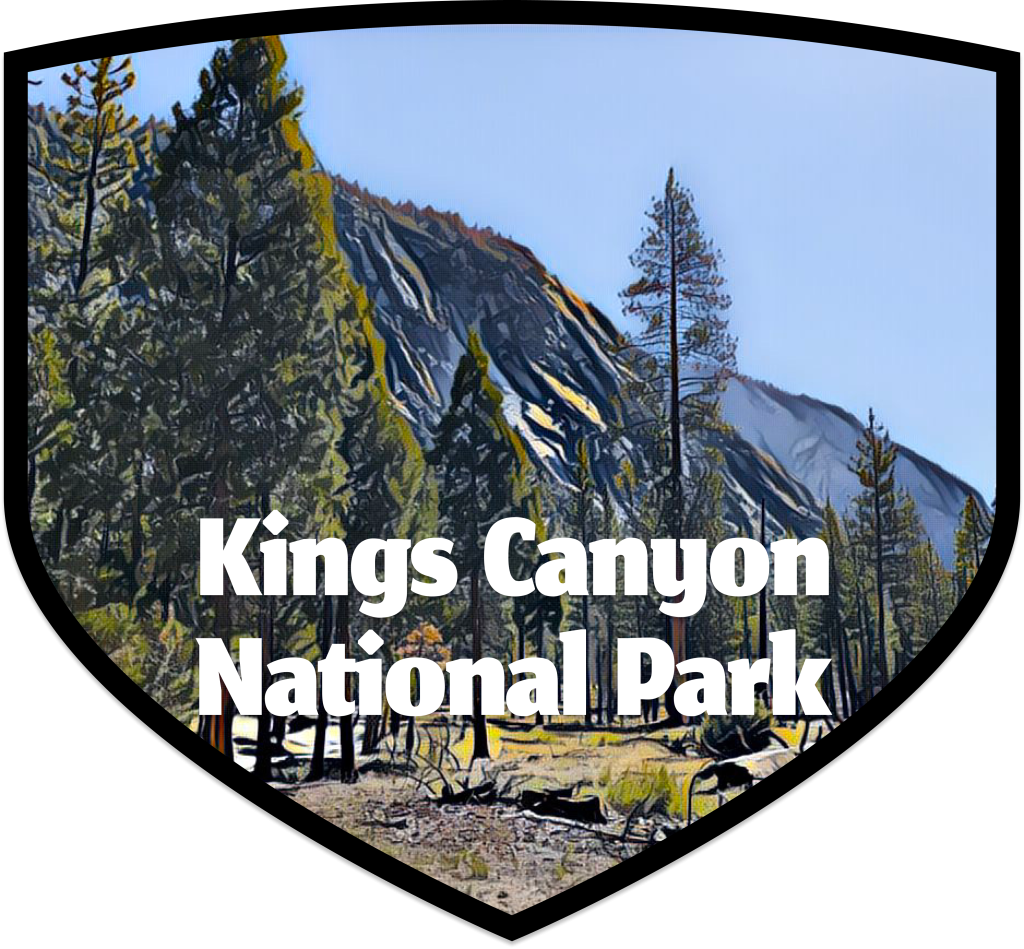
Overall impression about the Kings Canyon national park: Kings Canyon was probably the quietest of all the national parks we visited. Both on the campground and on the trail we met only a couple of people and could really enjoy the peace and quiet. There are many mountainous trails in Cedar Grove while General Grant Grove offers plenty of opportunities to visit the famous sequoia trees. While Kings Canyon is very close to Sequoia National Park, I felt as if most of the visitors skip this park, which is great if you’re looking for a quieter stay.
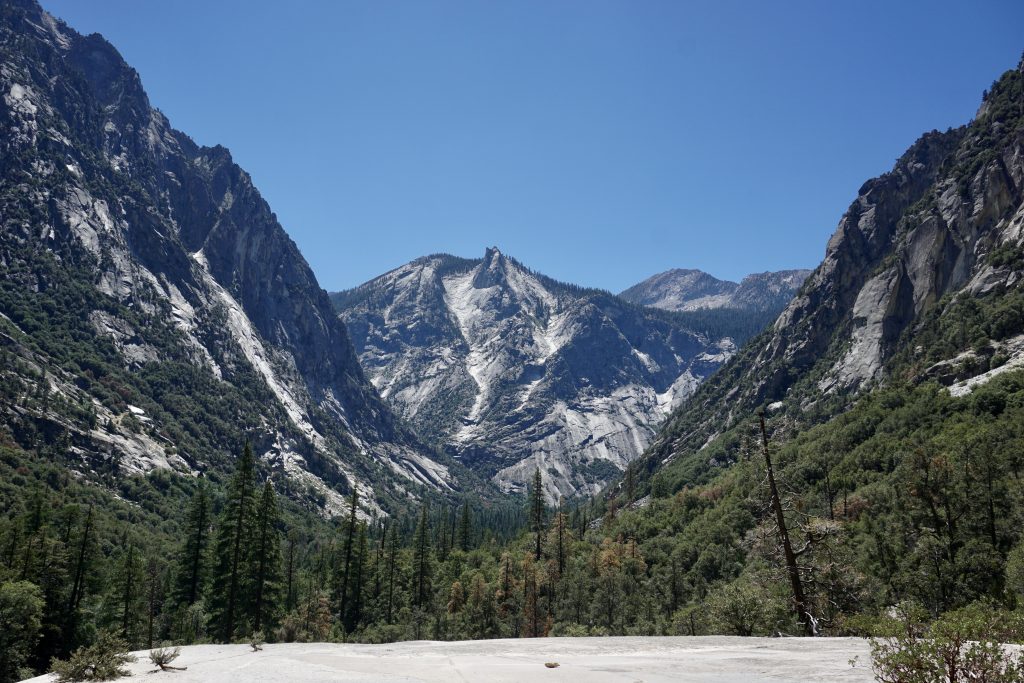
- Distance: 14.5km (9mi)
- Duration (with breaks): 4h 00min
- Elevation gain/loss: 245m/245m
- Difficulty: easy to moderate
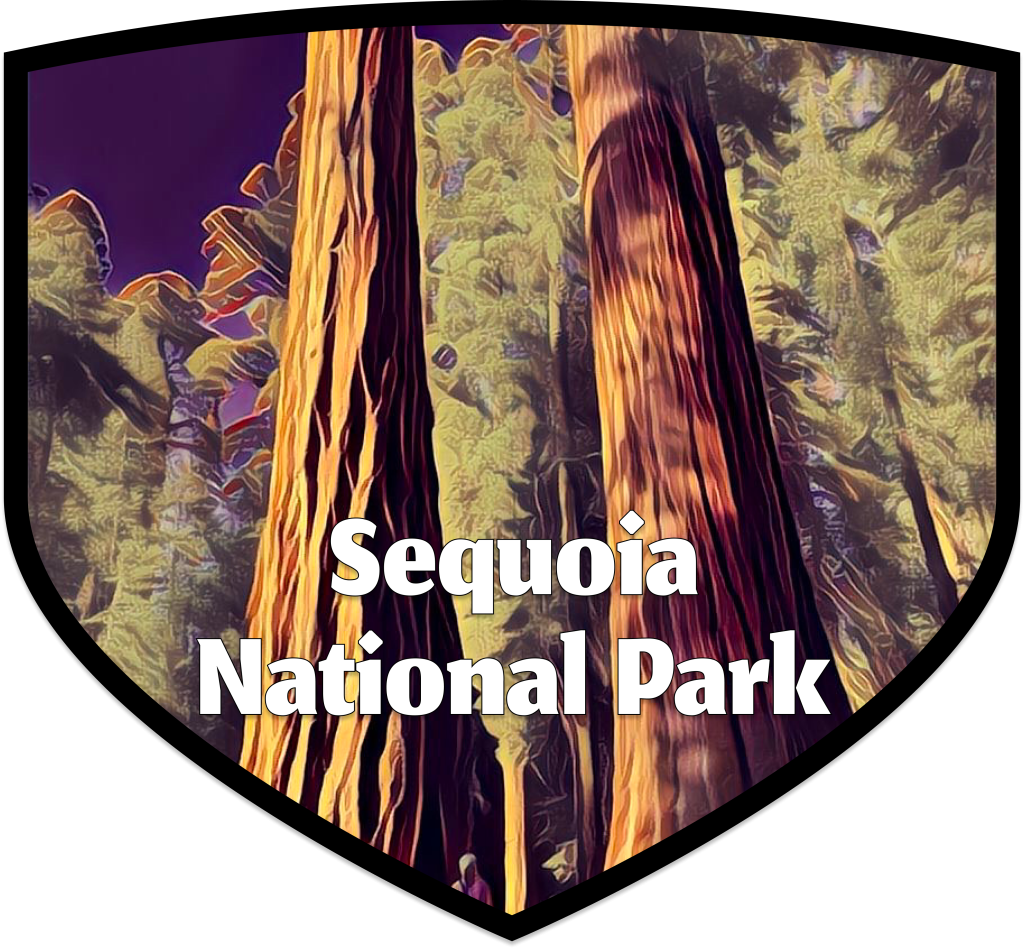
Overall impression about the Sequoia national park: This national park has many trails and many faces. While there will be crowds wanting to see some of the world-famous sequoias, more mountainous trails will be less visited and no less spectacular. We liked the many choices in terms of trail difficulty and terrain, and the scenic rides to and from the park. We found the bus services around the park less efficient than taking a car as many hikes required switches and the connections were suboptimal.
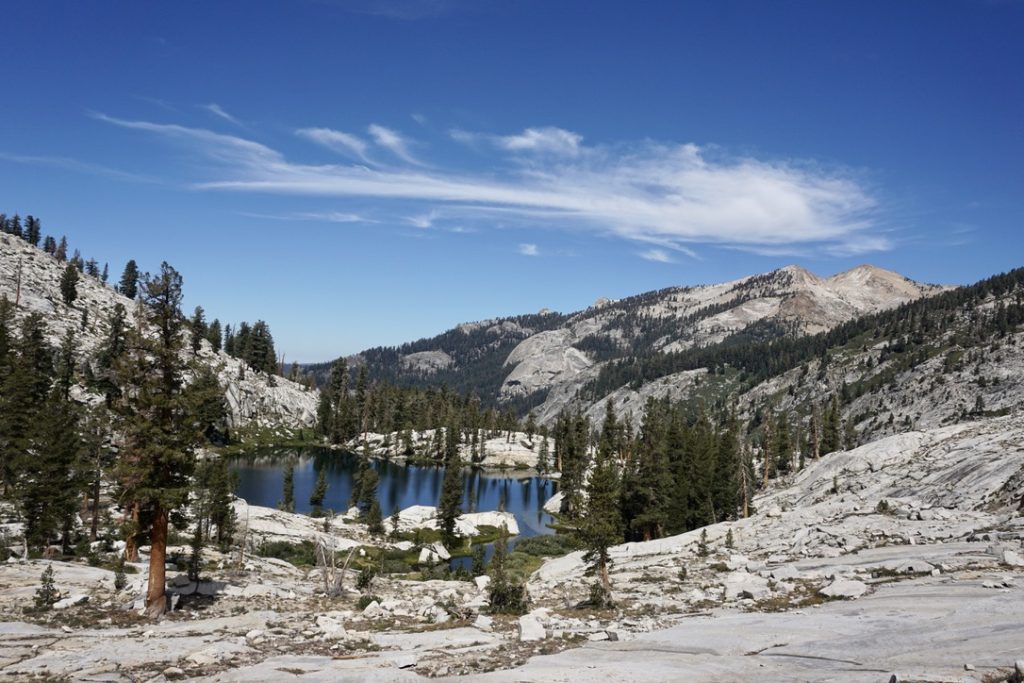
- Distance: 21km (13mi)
- Duration (with breaks): 7h 30min
- Elevation gain/loss: 1078m/1097m
- Difficulty: moderate to hard

Overall impression about the Grand Canyon national park: This was the place that took a while to digest 😄 The Grand Canyon is damn grand and often the scale of it was hard to comprehend. It was crowded but you could always find a quiet place if you walked a few minutes from the main viewpoints. We liked the uniqueness of the landscape, the shuttle services were pretty good and the campsites inside the park were spacious and well organised.
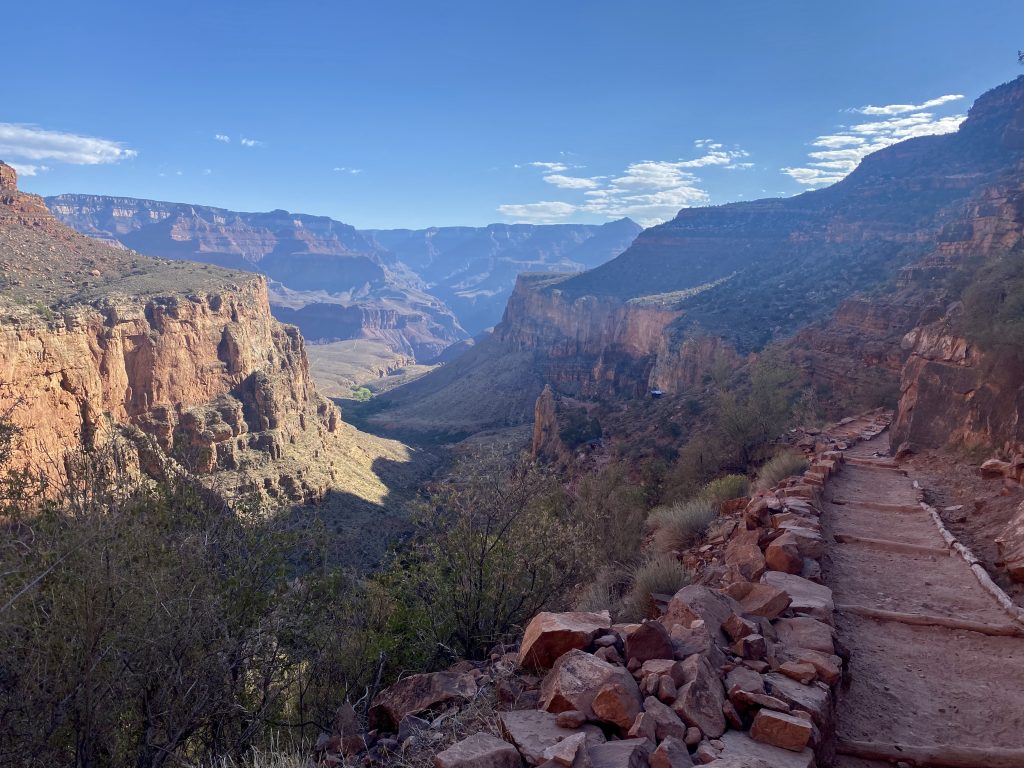
- Distance: 11km (7mi)
- Duration (with breaks): 4h 00min
- Elevation gain/loss: 585m/585m
- Difficulty: easy to moderate
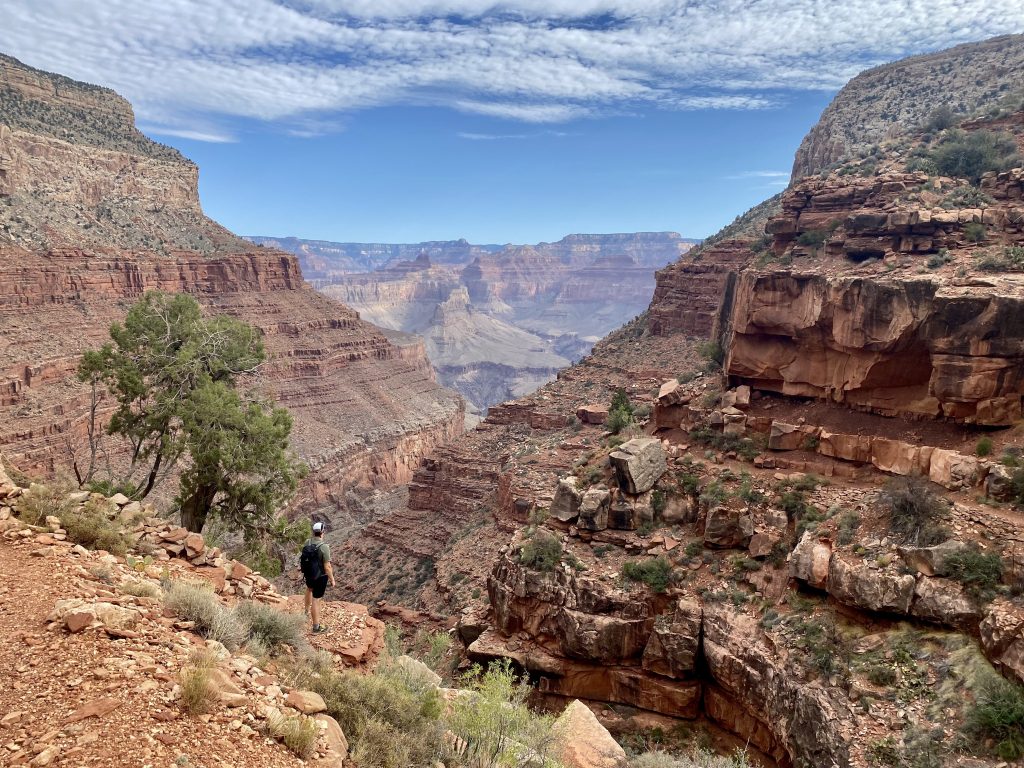
- Distance: 7km (4mi)
- Duration (with breaks): 3h 30min
- Elevation gain/loss: 480m/480m
- Difficulty: moderate

Overall impression about the Bryce Canyon national park: Compared to the neighbouring Zion and Grand Canyon, Bryce is a more tranquil park. Very unique landscapes and even the ride to the park is very scenic. We’ve spent 2 days exploring it and I’d say that was enough. It’s a small park and at some point the hoodoos just start looking the same.
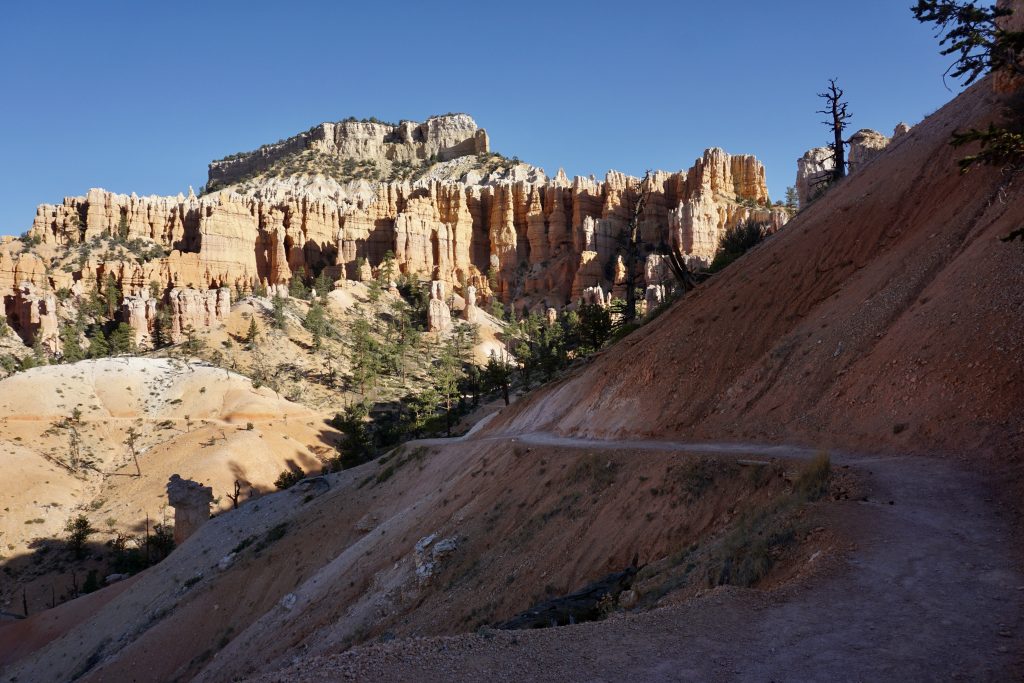
- Distance: 14km (9mi)
- Duration (with breaks): 4h 00min
- Elevation gain/loss: 460m/460m
- Difficulty: easy to moderate

- Distance: 8km (5mi)
- Duration (with breaks): 2h 30min
- Elevation gain/loss: 403m/409m
- Difficulty: easy to moderate
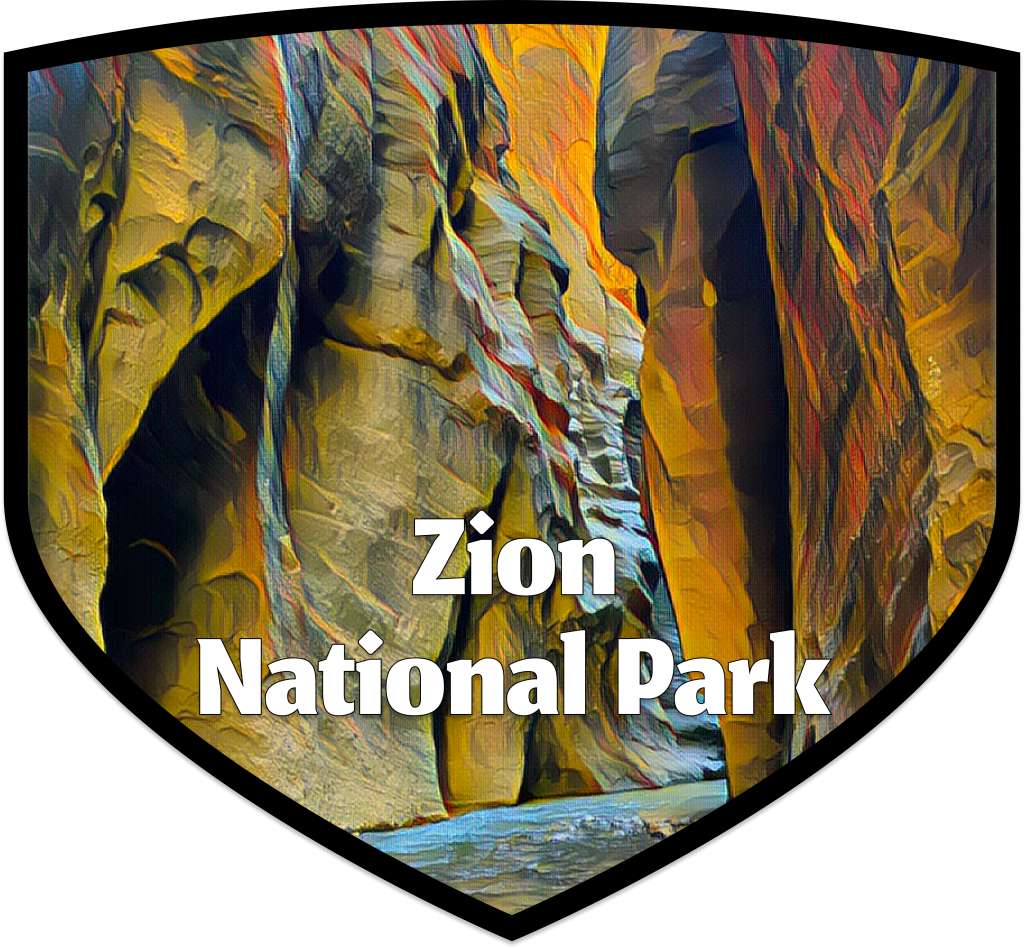
Overall impression about the Zion national park: It’s a very busy national park. So busy that if not for the very beautiful and unique hikes, I would not recommend it. The village next to the park is very expensive so it’s a pitty that there are no park campsites, so no spacious and quiet places in the nature. You can visit the park only by using the shuttle bus services, the park itself is closed for cars. While shuttles go very frequently, they are not air conditioned and during a heatwave they are very toasty 😅 So overall I did not like many aspects around the park, while I really liked both of the hikes.
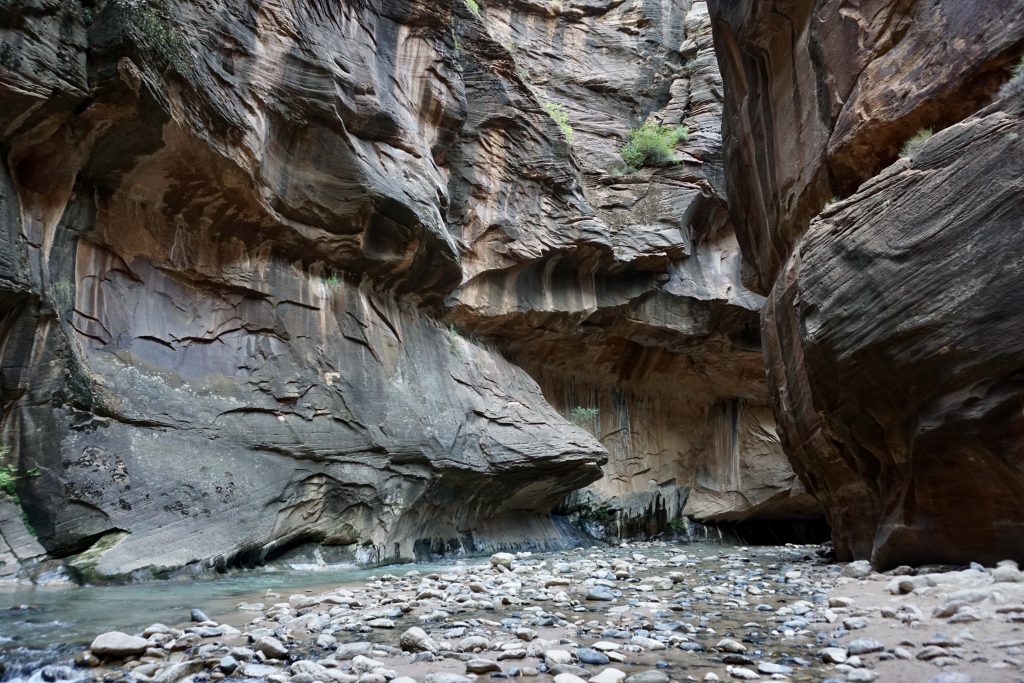
- Distance: 16km (10mi)
- Duration (with breaks): 6h 30min
- Elevation gain/loss: 72m/72
- Difficulty: easy to moderate
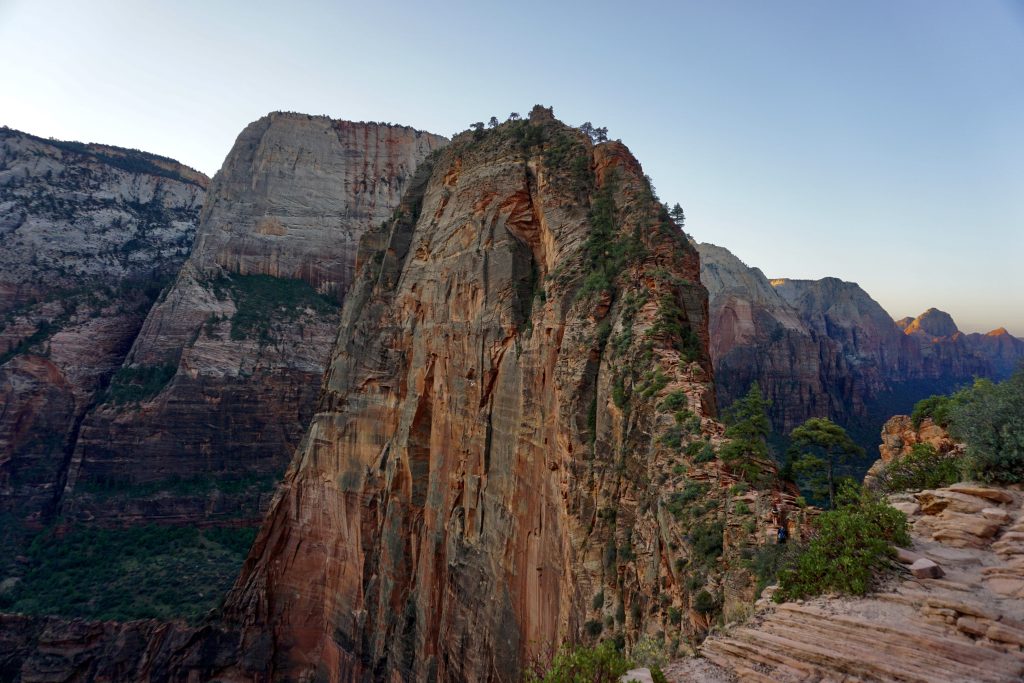
- Distance: 8km (5mi)
- Duration (with breaks): 3h 15min
- Elevation gain/loss: 420m/420m
- Difficulty: moderate to difficult
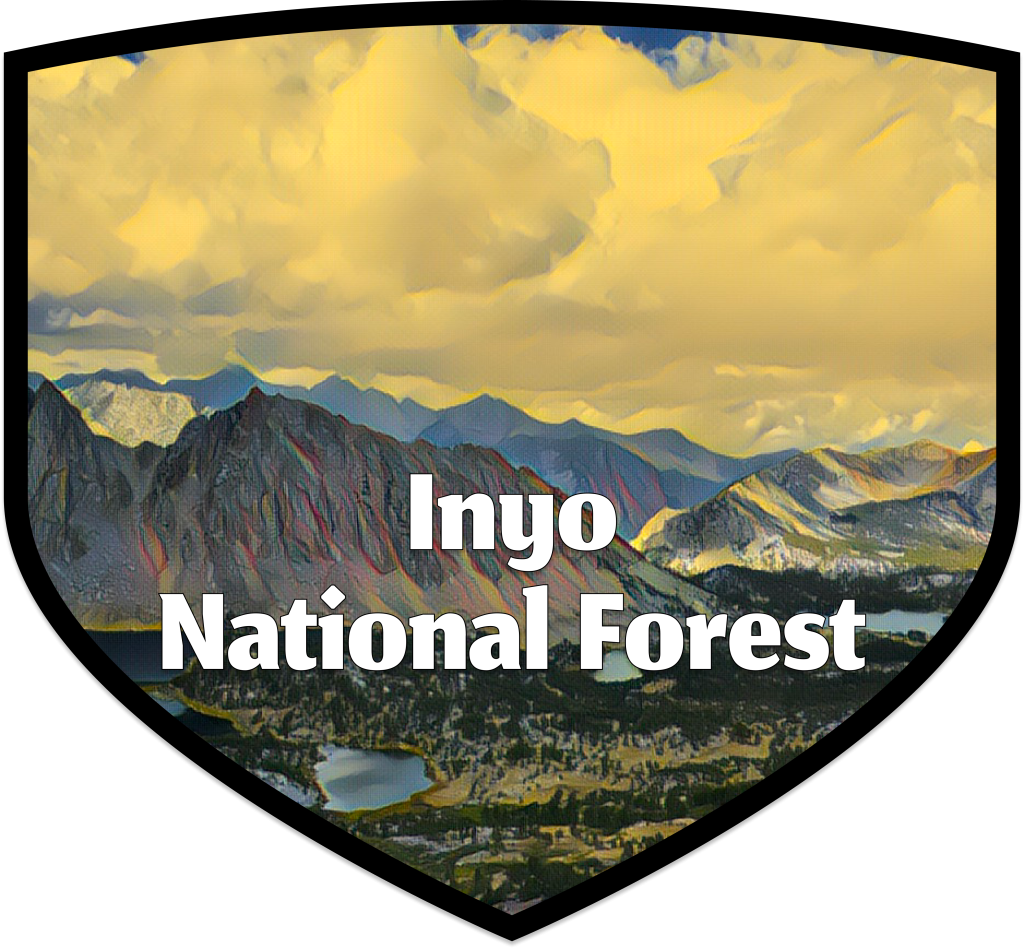
Overall impression about the Inyo national forest: This park felt like a hidden gem in the High Sierras. Our campsite was secluded and peaceful, the views of some of the highest Sierras peaks treating us even before the hike. We only had one night in this place and I’d say it’s well worth staying longer if you’d like to do a multi-day hike or explore the east side of the Sierras further. There are limited facilities around the park so it’s good to be strategic with food and fuel supplies.

- Distance: 15.5km (10mi)
- Duration (with breaks): 5h 30min
- Elevation gain/loss: 733m/733m
- Difficulty: moderate to difficult
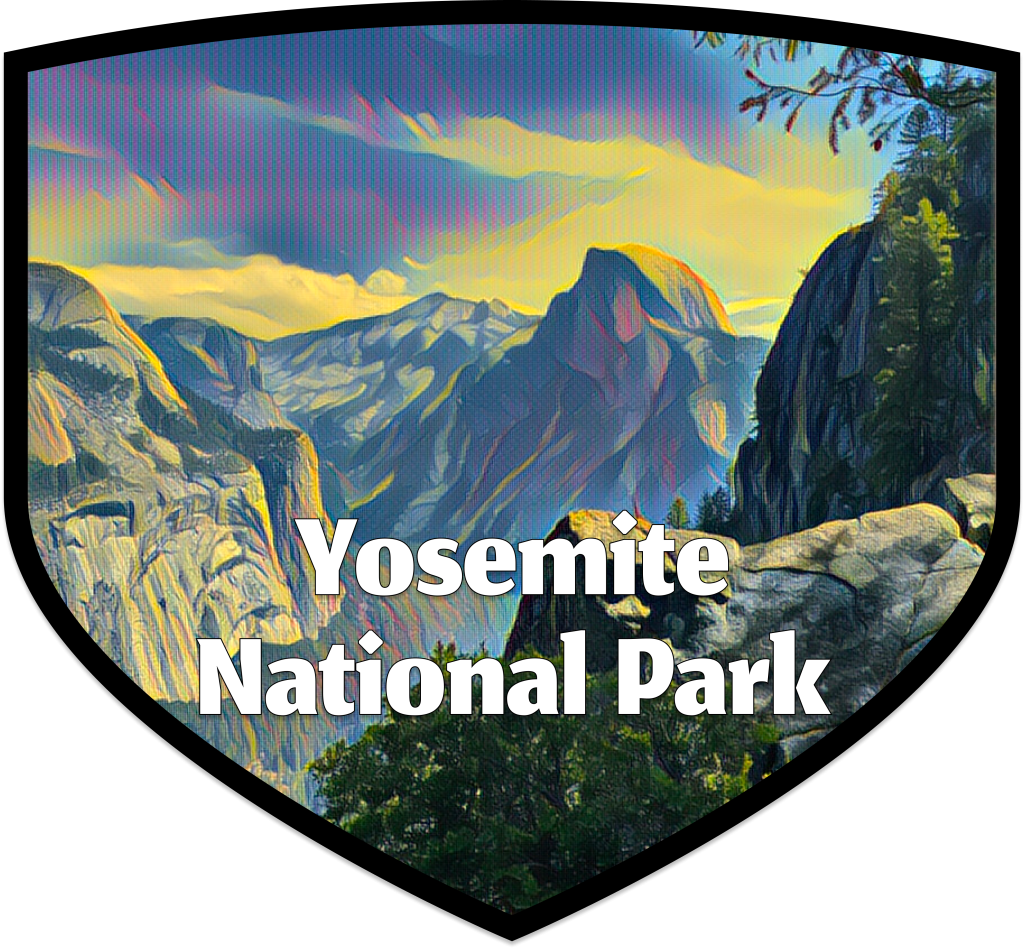
Overall impression about the Yosemite national park: This park is so popular that there are Drive-in permits (yes, you cannot just drive into Yosemite anymore). We also could not get any campsites inside the park. While the park is very busy, it is also huge and everyone can find hikes to their taste. The north side of the park is way less crowded, but hey, the Yosemite Valley is too impressive to skip. Just to be able to see the Half Dome and El Capitan was impressive already. One thing to avoid is sadly the shuttle busses. We often had to wait for more than 30 mins for a bus so the car was a much faster option.

- Distance: 13km (8mi)
- Duration (with breaks): 3h 45min
- Elevation gain/loss: 417m/417m
- Difficulty: easy to moderate
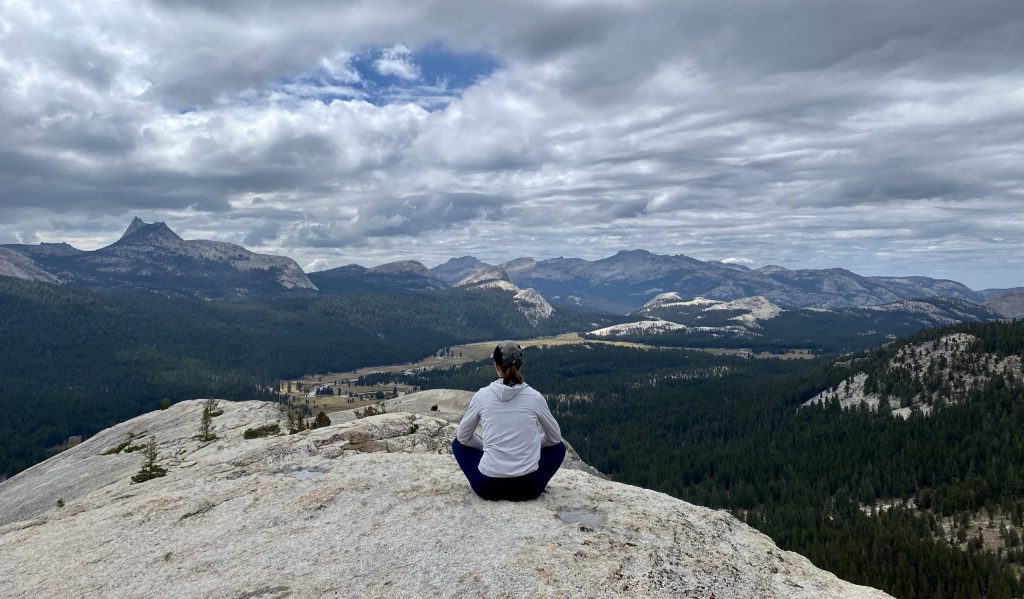
- Distance: 3km (2mi)
- Duration (with breaks): 1h 20min
- Elevation gain/loss: 218m/209m
- Difficulty: easy to moderate
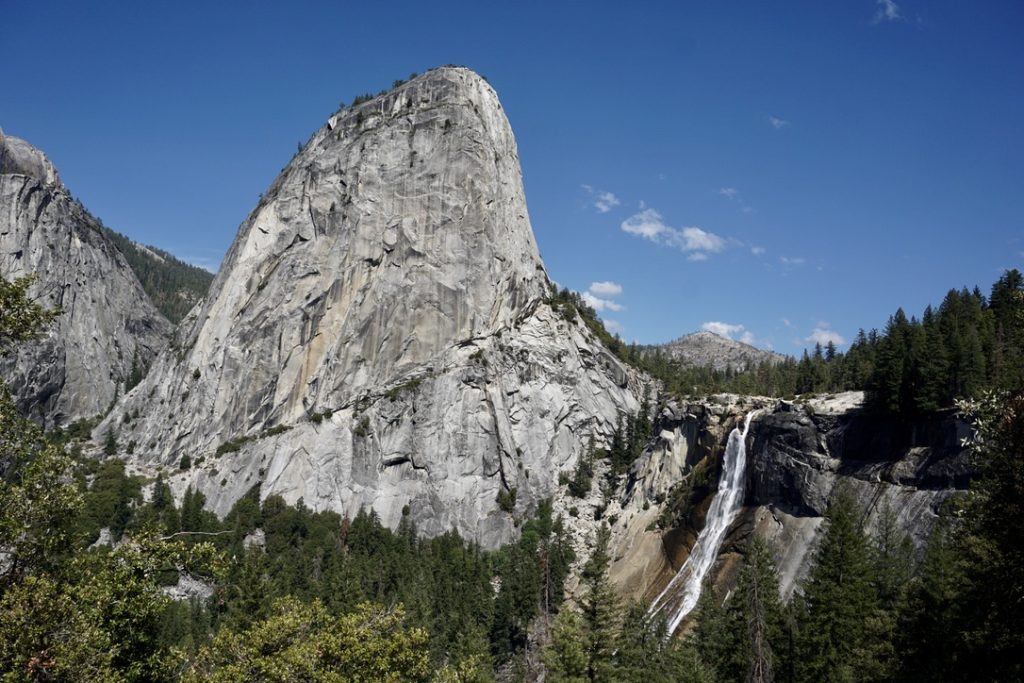
- Distance: 12km (7mi)
- Duration (with breaks): 4h 30min
- Elevation gain/loss: 641m/591m
- Difficulty: moderate to difficult
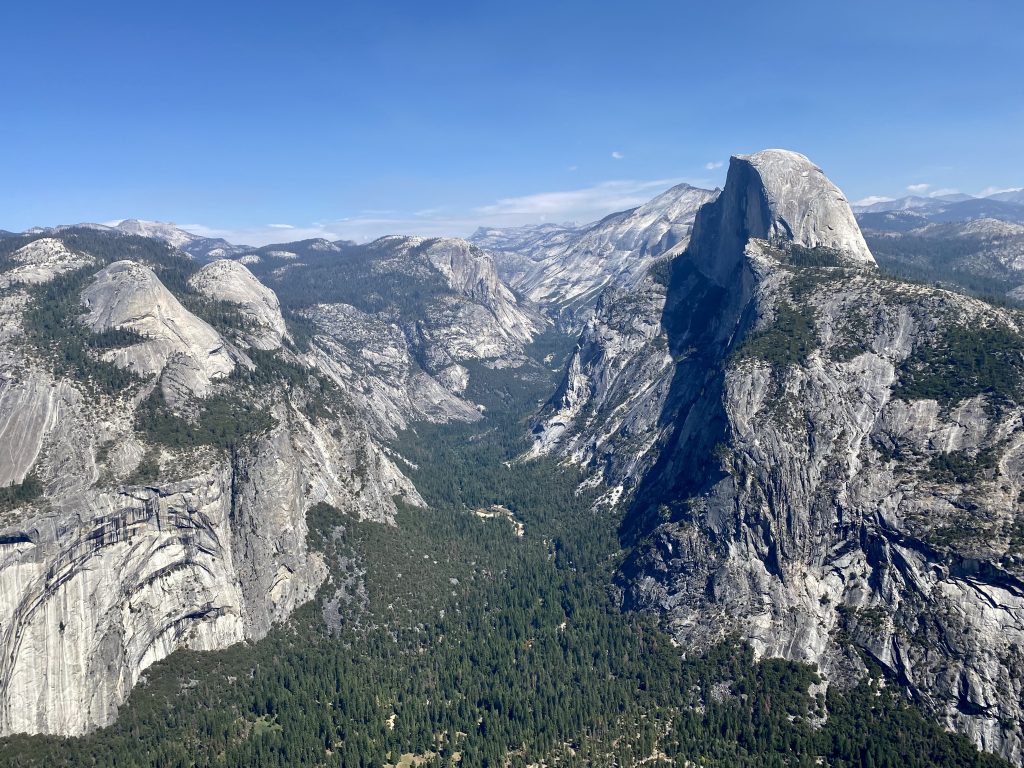
- Distance: 17km (10.5mi)
- Duration (with breaks): 5h 40min
- Elevation gain/loss: 978m/968m
- Difficulty: moderate to difficult
Gear
Since this is a road trip without any multi-day hikes, we did not per se optimize our gear based on weight. However, we only had one check-in item for our flight, so we decided to pack two backpacks and put them in one cover bag (make it into one check-in item), so our aim for both backpacks was to weigh no more than 23kg together. That was not difficult to achieve 😉 To be honest, packing for this trip didn’t feel that different from packing for a multi-day hike. The major difference was extra chill clothes instead of camping gear.
You can find the full gear list on my LighterPack page, where I store my hiking gear lists from different trips. Here’s a rough summary of what I took:
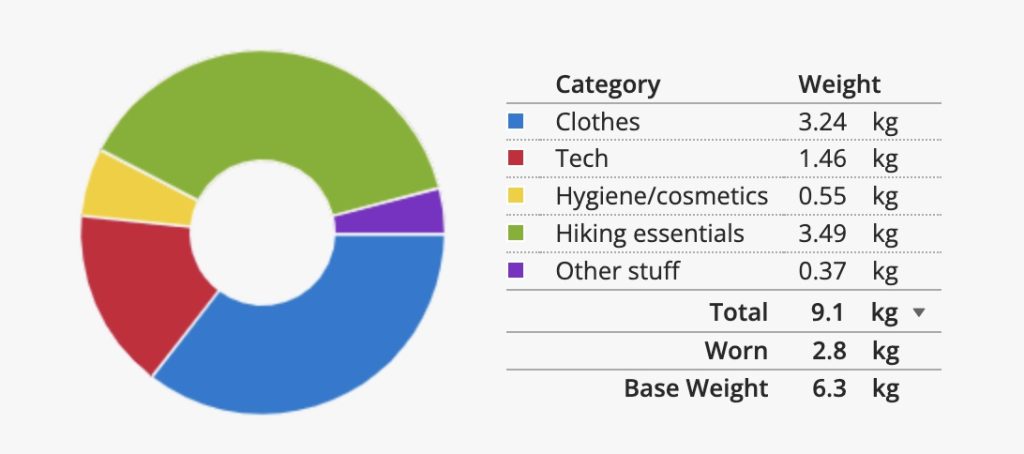
3 items I loved on this trip:
- Sun hoodie. This item is a repeated #1 in many of my hikes. And deservedly so. During our USA road trip, there was a massive heat wave and a sun hoodie was absolutely essential during all the hikes we did. Besides, wearing it meant I didn’t need to fully depend on sunscreen, which I really don’t like using during physical activities as it soon turns into a sticky mix of sunscreen and sweat. A sun hoodie actually helped to stay cool while protecting my upper body (including my ears!).
- Sunglasses. I needed them everywhere! 😄 I guess it’s not a surprise that a trip with a heatwave will “make” me appreciate the accessories protecting from the sun. A sunglass string is also highly recommended, especially if you tend to lose stuff while on a trip (guilty ☝️).
- Sandals. I did not hike in them but driving, especially on the long days, in sandals was amazing. My feet could still breathe freely and I felt very comfortable the whole time driving. I also wore sandals in most of the campsites if the temperatures didn’t drop.
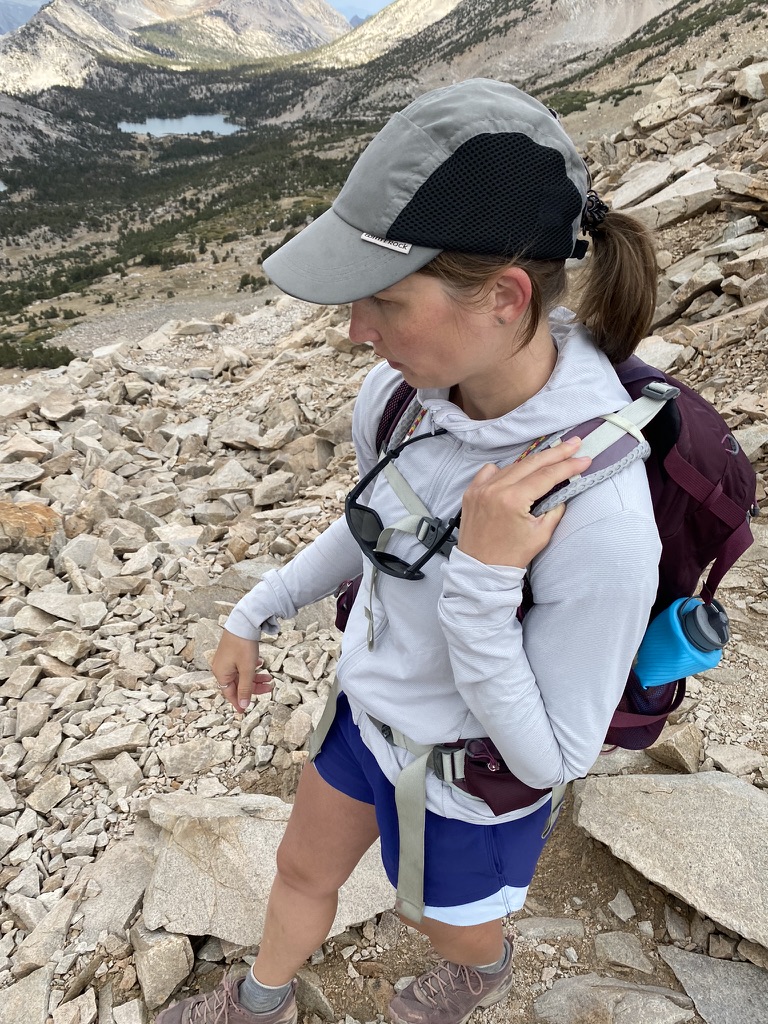
3 new items I added to my gear after this trip:
- Long-sleeve shirt. Ok, this one was not really needed 😅 I just spotted a beautiful North Face shirt with cacti all over it and decided that I need a memento from Arizona (and a functional one!). Not sure if I’ll add it to my regular gear list, still to be tested.
- Water flask. So my Katadyn flask started leaking and that was the end of it… I desperately needed a new flask and found a much more robust flask that is also compatible with the Katadyn BeFree water filter. So far, so good!
- Bug net. While researching the hikes in Yosemite I read in my blogs fellow hikers complaining about bugs, especially on the Four Mile trail. We decided not to gamble and got ourselves bug nets from a local sporting goods store. It was a light and very handy addition as indeed, the Four Mile trail has some sections with quite annoying swarms of bugs.
What was in my hiking day pack:
Since we only did day trips, I did not optimize my day pack for weight at all. Fun fact: my day pack is actually heavier than the backpack I take on multi-day hikes.
- Backpack – Osprey Sirrus 24
- First aid kit
- Water flask + water filtration system
- Sunscreen
- Snacks (e.g. gummy bears, cookies, fruits)
- Ass pad
- Camera
- Satellite communicator
- (sometimes) Rain jacket
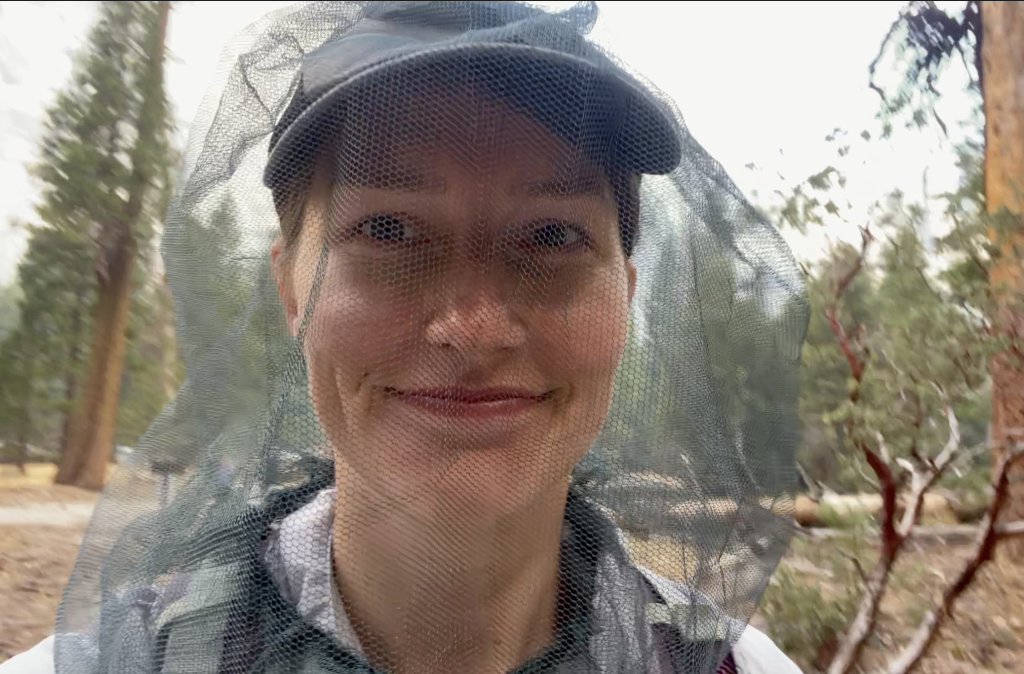
Budget
So how much does a three-week camper van road trip through the West Coast of the United States cost? In total, for this trip with the two of us, we’ve spent roughly 9500 Eur. Let’s dive into the costs in more detail.

Flights & taxis. I've put this category separately as the flight cost highly depends on your location. We had quite some taxi rides in San Francisco and Las Vegas which added up to less than 300 USD in total.
Camper van. By far the highest expense and I wish I could say that it could be reduced 😅 As mentioned in the intro, renting a car was hardly cheaper.
Gas. I decided to put these expenses separately from the van costs since it highly depends on the gas price. 2022 was an expensive year 😄 Besides, our camper van really loved gas. Often.
Accommodation. The largest expenses in this category were the hotels in San Francisco and Las Vegas. The other accommodation expenses were for the campsites, which cost roughly 25-40 USD per day.
Food. We cooked a lot and found out that food was rather expensive. Many times we’d leave the supermarket with food for 2-ish days and pay roughly 80 USD. But ok, we also went on a USA culinary exploration trying out all kinds of fast food places and diners as Edo had his wish list of burgers to try 😄
Miscellaneous. This section includes souvenirs, permits, and other small costs I could not place in the other categories. The largest cost is the America The Beautiful card (80 USD). Well worth it!
Tips
A few extra tips and lessons we learned when planning the trip and on the trip itself.
Permits
There are entire great blog posts dedicated just for that as the USA National Park permit system is pretty confusing so I won't repeat the information in detail. A few notes for hikers - if you want to do a multi-day hike, most of national parks will require a permit and I found out that most of the permits are issued / up for a lottery as early as January or February. We did not do any multi-day hikes simply because we did not get permits. Even some popular day hikes now require a permit (e.g. Angels Landing and Half Dome chains). If you really want to go into the wilderness for at least one night and you struggle with permits, try looking for a less common place. E.g. Inyo national forest was way less crowded than Sequoia national park while both share the High Sierras.
Crowds
I did not expect most of the national parks being THIS crowded. Of course, the landscapes are amazing and well worth visiting but I sometimes felt like I'm in an amusement park and not in the nature. We were there in September so I cannot imagine how busy the summer months are. If you're looking for a more peaceful time, your only hope is an early morning or late afternoon. E.g. for the Narrows hike in Zion we woke up at 5:30 am to be in one of the first busses. We were not the only ones but definitely could enjoy the peace and quiet for most of the hike.
Internet / sim card
Since we're from Europe and we stayed in the USA for three weeks, there's no doubt that a sim card with internet would be useful. This time we used Airalo eSIM, which you can basically order online without needing to add any physical sim cards into your phone. We found it super handy and easy.
